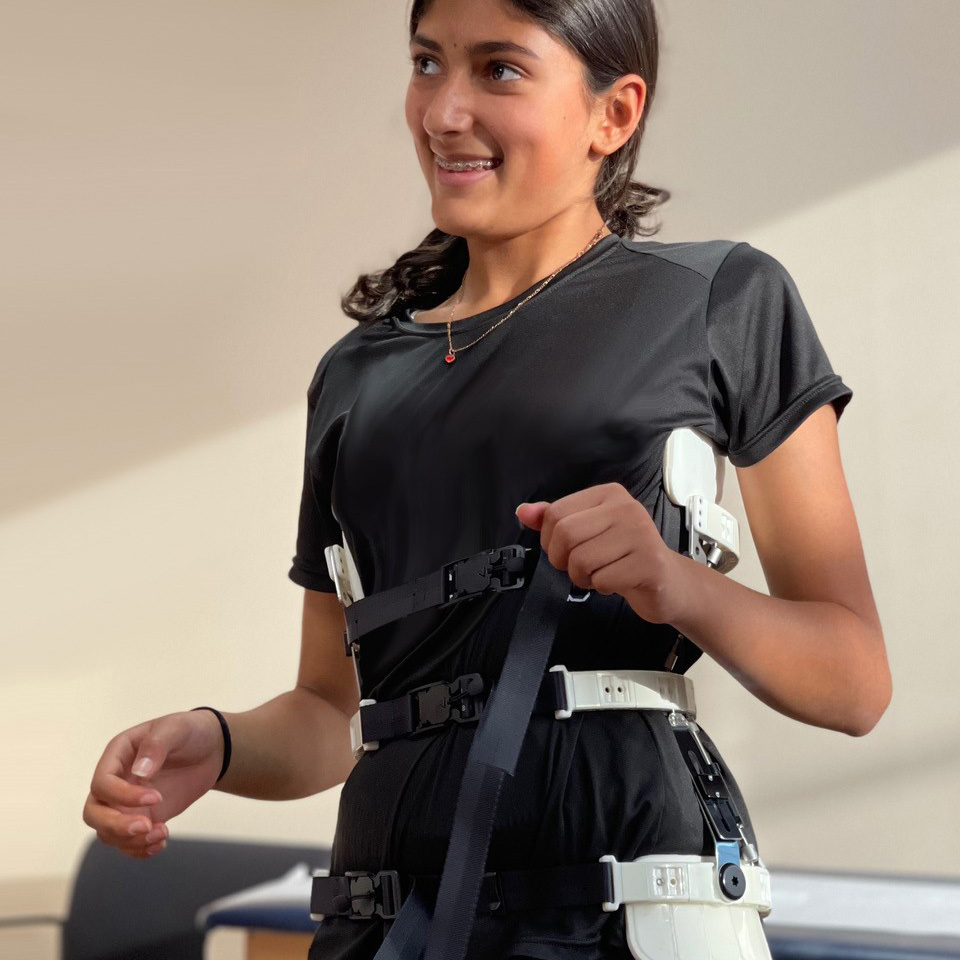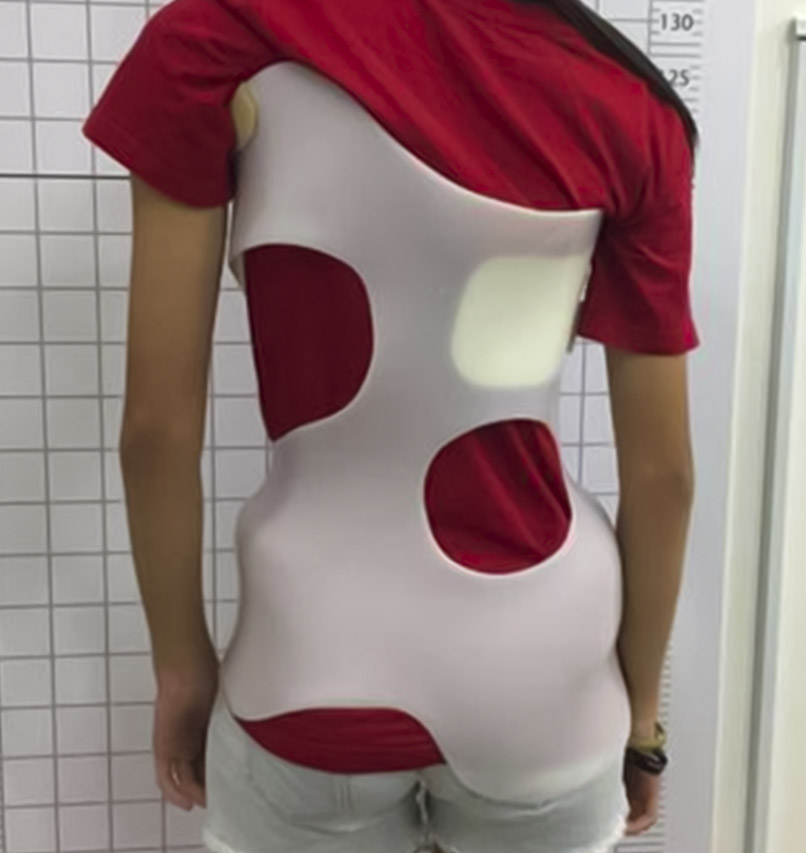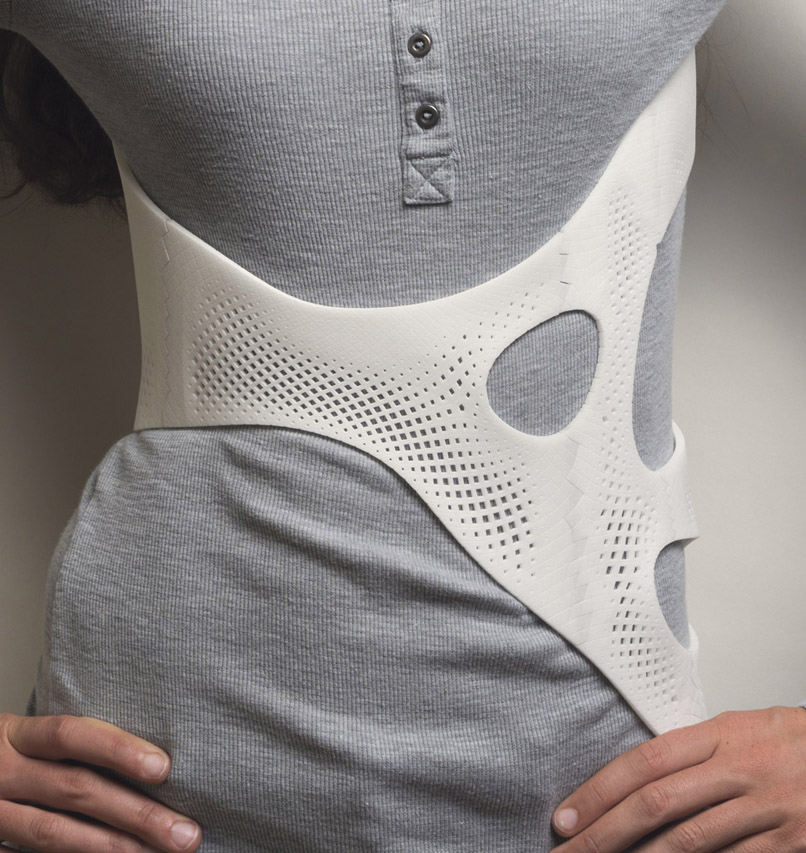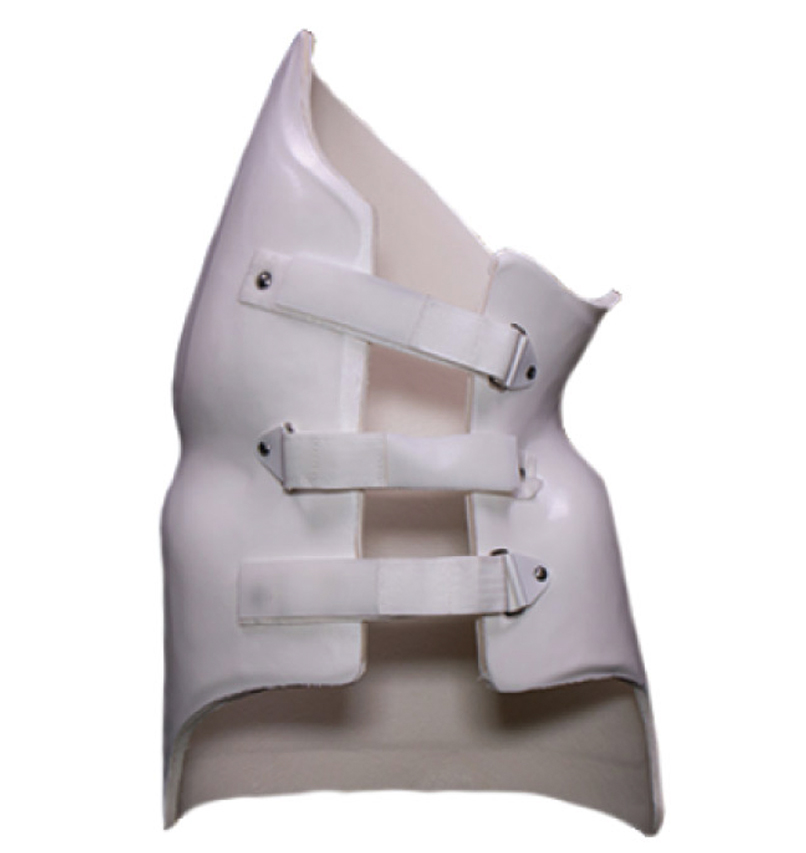Scoliosis Bracing Options & Treatments
Learning that your child needs a brace for scoliosis may feel overwhelming at first, but before you know it you and your child will become experts at adapting your days and activities to this new part of your journey with scoliosis. Below, you will learn a lot about scoliosis bracing options including information about how braces work, tips and tricks for success with bracing and so much more.
Bracing therapies
When it comes to your scoliosis brace options, you’ll encounter various different shapes, sizes, constructions and materials. Often, a rigid brace is prescribed to help stabilize a scoliotic curve; to keep the curve from progressing or becoming larger. These types of braces may cover a larger area of the body’s trunk and may be constructed using sturdy materials, such as plastic, metal, strong and/or breathable fabric. Rigid braces may be made with holes or areas that offer ventilation for comfort. Though rigid bracing has been the standard for some time, recently new braces have become available that allow more range of motion. The adjustability of a brace depends in part on its purpose. Brace closures may utilize Velcro, belt-like straps, or loop-and-hook closures.
Different Types of Braces
There are many different types of scoliosis braces currently available to treat scoliosis. The brace that your child receives will be decided by their doctor and orthotist, based on many factors including your child’s age, skeletal maturity, curve size, curve location and the desired outcome for bracing. Below, you can learn a little more about the scoliosis brace types that are available.

Green Sun Medical Whisper Brace:
The Green Sun Medical Whisper Brace™ provides continuous corrective pressure similarly to other scoliosis braces, but all while allowing patients to move much more freely. It also allows clinicians and parents to monitor patients remotely in real-time. The Whisper Brace™ monitoring system provides real-time compliance feedback via a Bluetooth-connected system viewable on a mobile app downloaded on the patient’s or parent’s phone.

Boston Brace/Boston 3D:
This brace was first made in 1972 and is currently the most commonly prescribed brace. It was the first brace design to eliminate a metal scaffold that was seen in the Milwaukee brace which helped make scoliosis braces a lot less noticeable underneath clothing. The Boston Brace has Velcro straps, typically on the back, that are able to be tightened to fit snuggly. This brace can often be customized, so you can pick a color or design to be printed on the plastic part of the brace. Sometimes there are even stickers that can be added!

Rigo-Chêneau Brace (3D):
This brace provides a custom fit for your child based on 3D scanning. Unlike the Boston brace that typically has straps on the back, the Rigo-Chêneau brace opens in the front, so it is easier for a child to independently take off and put on. Like the Boston Brace, this brace can have custom colors and patterns added. This brace has shown some better results in preventing the progression of scoliosis because of its unique 3D design that is very specific to the patient’s back.
UNYQ Align™ Brace:
This is a custom-fitted, 3D printed brace. It is more breathable, so some children find it to be more comfortable as they do not get as hot.

Charleston® Bending Brace:
This is a brace that is worn only at night to help stop the progression of a curve. The brace bends the child to the opposite of the curve while they sleep. Some offer this brace to their patients in specific circumstances because the child does not need to wear a brace during the day.

The SpineCor® Brace:
Unlike the other braces, this brace does not use hard plastic. This brace is customized for each child and it allows normal movement and does not reduce flexibility.
I need a brace, now what?
Now that you’ve been diagnosed with scoliosis and the doctor has recommended bracing as the best course of treatment, how do you educate yourself on the best methods?
Learning that your child needs a brace for scoliosis may feel overwhelming at first, but before you know it you and your child will become experts at adapting your days and activities to this new part of your journey with scoliosis. Below, you will learn a lot about bracing including information about how braces work, tips and tricks for success with bracing and so much more.
How bracing works
The process of getting a brace…
In order for bracing to work effectively, the spine must still be growing. The prescribing doctor will ask a series of questions and order certain x-rays to determine if the patient still has a fair amount of growing to do. Braces not are right for everyone and aren’t capable of treating certain types of scoliosis. For example, if the curve is too big (over 40 degrees) other treatment options are usually more effective, and if the curve is small, a brace may not be needed at all (less than 20 degrees). If it’s determined that bracing is a good option, the orthopedic specialist will examine the child and recommend a brace based on the severity, location, and scoliosis type.
Since each person’s scoliosis curve is unique to them, braces are often specifically made for each patient. Scoliosis braces are made by specialists called orthotists. Usually, the doctor will recommend one that they commonly work with, though families have the option to research and choose on their own as well. Depending on the patient’s age at diagnosis and the severity of the scoliosis, a patient’s brace treatment may include a series of braces spanning a couple of years. As a patient grows and changes, braces are either replaced or adjusted for treatment correction to continue its best effectiveness.
How exactly does this help correct my scoliosis?
The primary purpose of a scoliosis brace is to prevent your spine from becoming more curved as you grow. As the spine curves, the vertebrae sometimes also twist toward one side of the body.
The brace will be molded to hold your spine in a straighter, unrotated position. It does this by putting pressure on the outer edge of your curve. This will cause you to stand up straighter as you pull away from this pressure.
Questions to ask your orthotist
If your doctor believes that bracing may help your spinal condition or recovery from spine surgery, he or she will refer you to an orthotist. An orthotist is a specialist who designs and fits braces. During your visit with your orthotist, it’s very important to come prepared with a list of questions. This article will give you some great starting points to help you learn as much as possible about your treatment.
Before visiting your orthotist, write down your questions and bring them with you to your appointment. This will ensure that all your questions and concerns are covered. Also, remember to bring a pen and some extra paper to record notes from your meeting. This way, you can review everything you learned when you get home. If possible, bring along a friend or family member—the more ears the better!
Here are some sample questions to get you started:
- What are the benefits of spinal bracing?
- Are there any risks associated with spinal bracing?
- Are there any side effects associated with spinal bracing?
- Is bracing commonly used for my condition?
- How does bracing help my condition?
- Can I continue my daily activities while wearing my brace?
- How should I care for my brace?
- Are there any clothing considerations I should take into account when wearing my brace?
- How long will I need to wear the brace?
- What is the success rate of bracing for patients with my condition?
- Do you have any brochures or other patient materials that I may take with me?
- Is there a website that I may visit for more information on this treatment?
- Are there any negative effects of wearing the brace too much?
Being an informed patient means taking an active approach to your healthcare—and asking questions is an excellent way to do that. Don’t be afraid to express any concerns or questions to your orthotist. A question you think is silly might actually uncover an important piece of information. Spinal bracing is a very personal treatment, so always ask questions about how to make your treatment most effective for you.
Reference: https://www.spineuniverse.com/treatments/bracing/questions-ask-your-orthotist
‘Questions to Ask Your Orthotist’
Reviewed by Nicola V. Hawkinson, DNP, RN, RNFA
Becoming your own advocate/your child’s advocate
You know your child the best and that makes you the most important expert in the room! Although some parents feel intimidated or uncomfortable speaking up while interacting with medical professionals, try to remember that when you advocate in a polite and calm manner, you are actually helping the entire team be better providers.
Some tips to help you successfully advocate for your child during their scoliosis journey.
- Write down important info and questions you may have so when you are talking to the doctor, you don’t forget the thoughts and questions.
- Make sure you are calm, cool and collected. Doctors are human too and while you may be frustrated, being rude will not likely produce a positive result.
- Don’t be afraid to ask for a second opinion.
- The hospital often has advocates, if you feel your voice isn’t being heard.
- If you truly are unhappy with the care and can’t come to a resolution, transferring to another hospital, physician or specialist may offer different insight.
